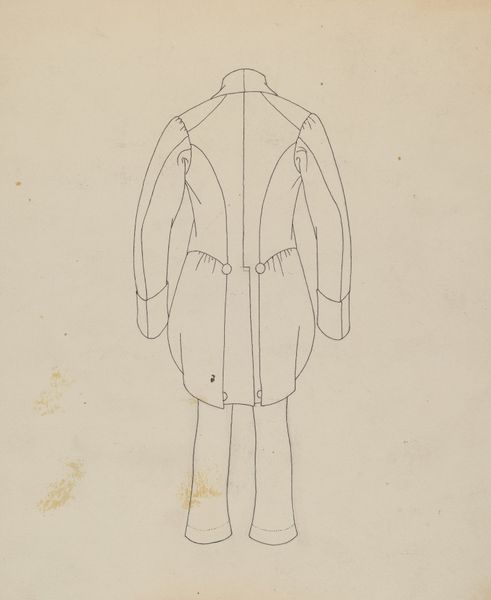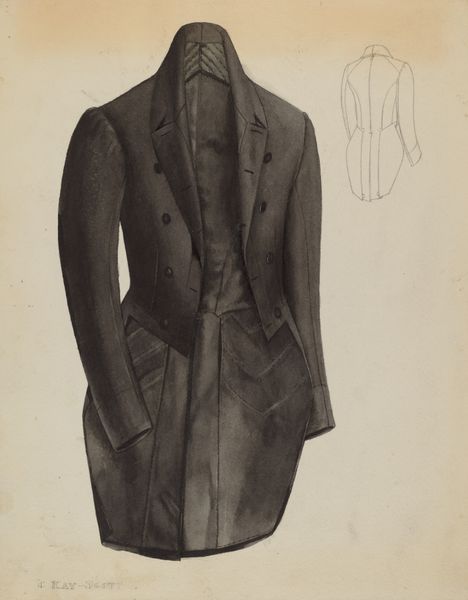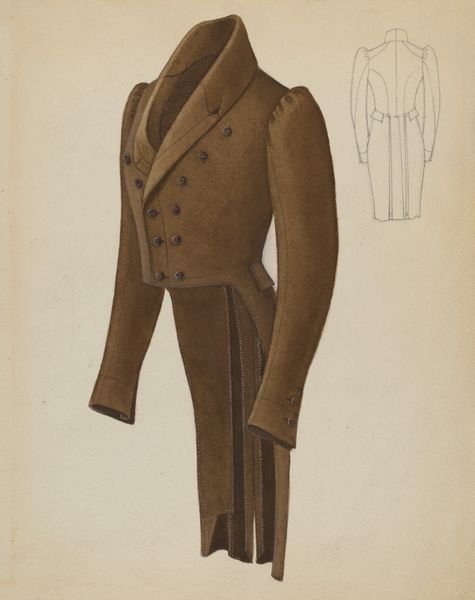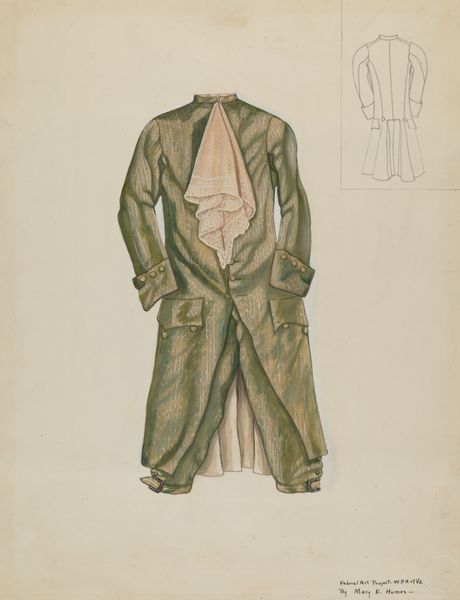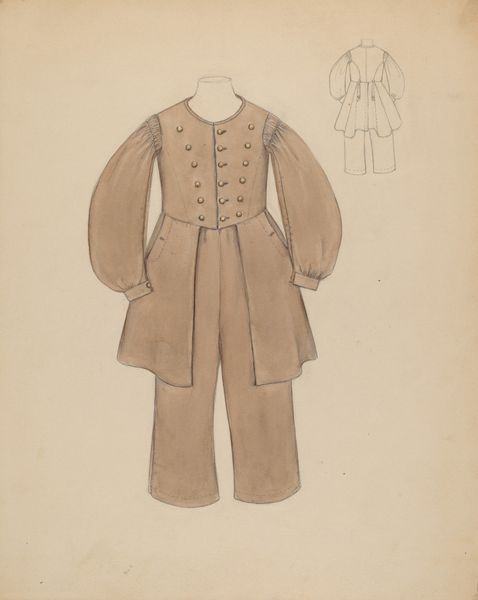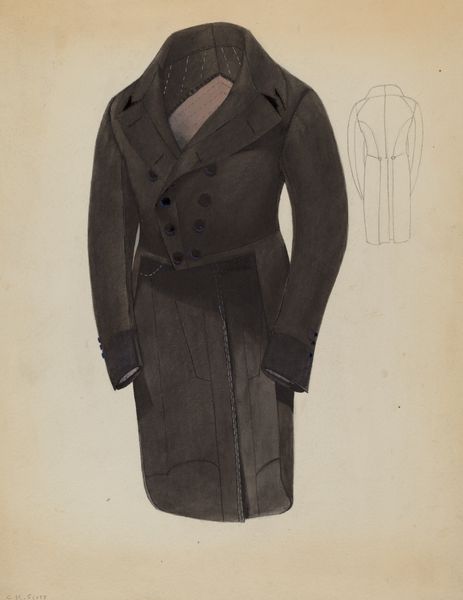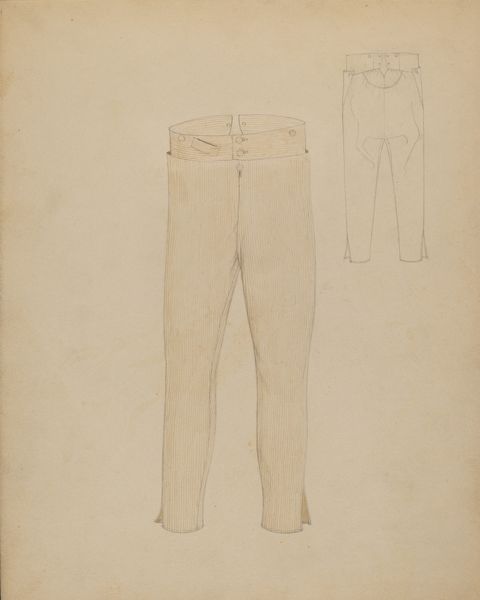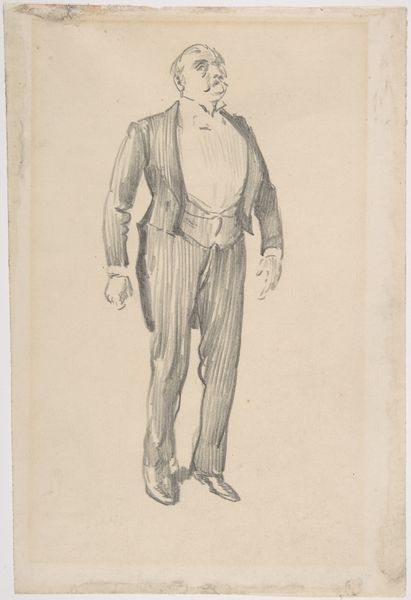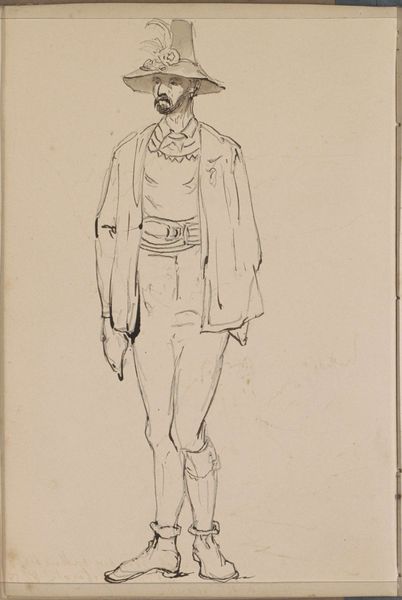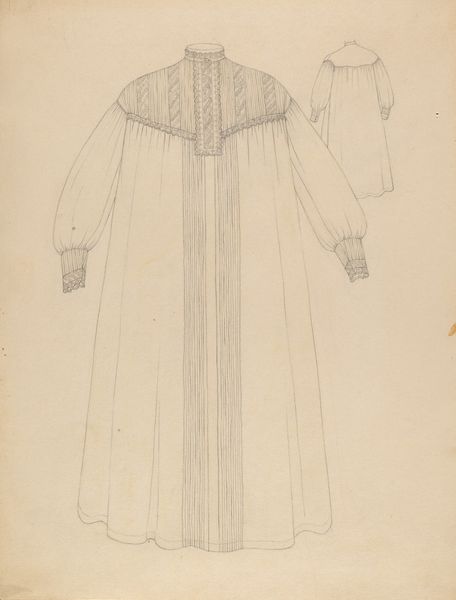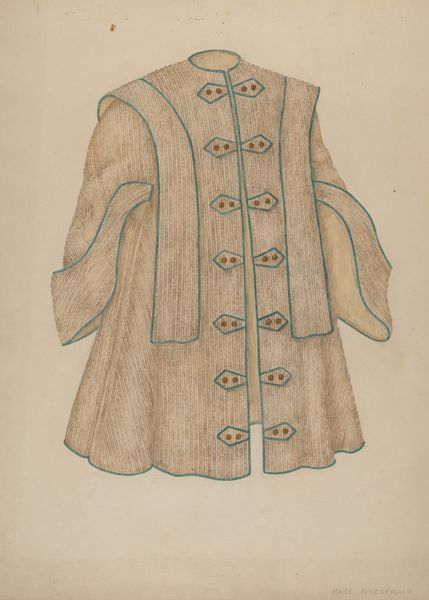
drawing, pencil
#
portrait
#
fashion design
#
drawing
#
underwear fashion design
#
light pencil work
#
fashion mockup
#
personal sketchbook
#
historical fashion
#
pencil
#
sketchbook drawing
#
clothing photo
#
fashion sketch
#
clothing design
Dimensions: overall: 28.5 x 22.6 cm (11 1/4 x 8 7/8 in.)
Copyright: National Gallery of Art: CC0 1.0
Curator: This charming piece is simply titled "Boy's Suit," and it’s believed to have been rendered around 1939, although we don’t know the specific artist behind this drawing. It seems to be pencil work on paper, probably from a sketchbook. Editor: The meticulousness strikes me; the tiny scalloped trim everywhere. It feels very precious and maybe a little constraining, doesn't it? You can imagine the specific social constraints surrounding what a young boy was expected to wear during that time. Curator: Absolutely, the design is incredibly detailed, focusing on ornamentation which emphasizes the aesthetic values. Clothing and fashion mock-ups provide critical insight to social history. It's fascinating to consider how gender identity, particularly boyhood, was being constructed and performed through clothing at that moment. Editor: Right, and who was designing these clothes? Were they reflecting mainstream ideas, or challenging them in some way? The image becomes more than just a design, but almost a visual manifestation of socio-political forces acting on childhood. Curator: Considering the date, it would be fascinating to explore who created this design and its connections to societal shifts in the role of the family in pre-war or post-war life and also reflect upon what "proper" attire would say about them as perceived members. It also provides us with an artifact of how one sector promoted fashion designs. The role of sketching becomes integral, reflecting values, hopes, dreams. Editor: I agree! This type of piece in museums humanizes historical narratives and is something we can all engage with because everyone gets dressed. If we view something like this as a dialogue around conformity and individualism, suddenly the social expectations have great personal consequence and significance. Curator: Yes, and by looking at it this way, we might gain deeper empathy for those children living then and start to question the impact imposed on today's children, considering their personal journeys while society constantly projects on them, Editor: It prompts us to consider our complicity as participants in the culture, too. Curator: Indeed. These designs have remarkable significance when viewed through a wide socio-political lens, Editor: Definitely a thought-provoking image of the fashion and values of its time, open to so many different readings.
Comments
No comments
Be the first to comment and join the conversation on the ultimate creative platform.
